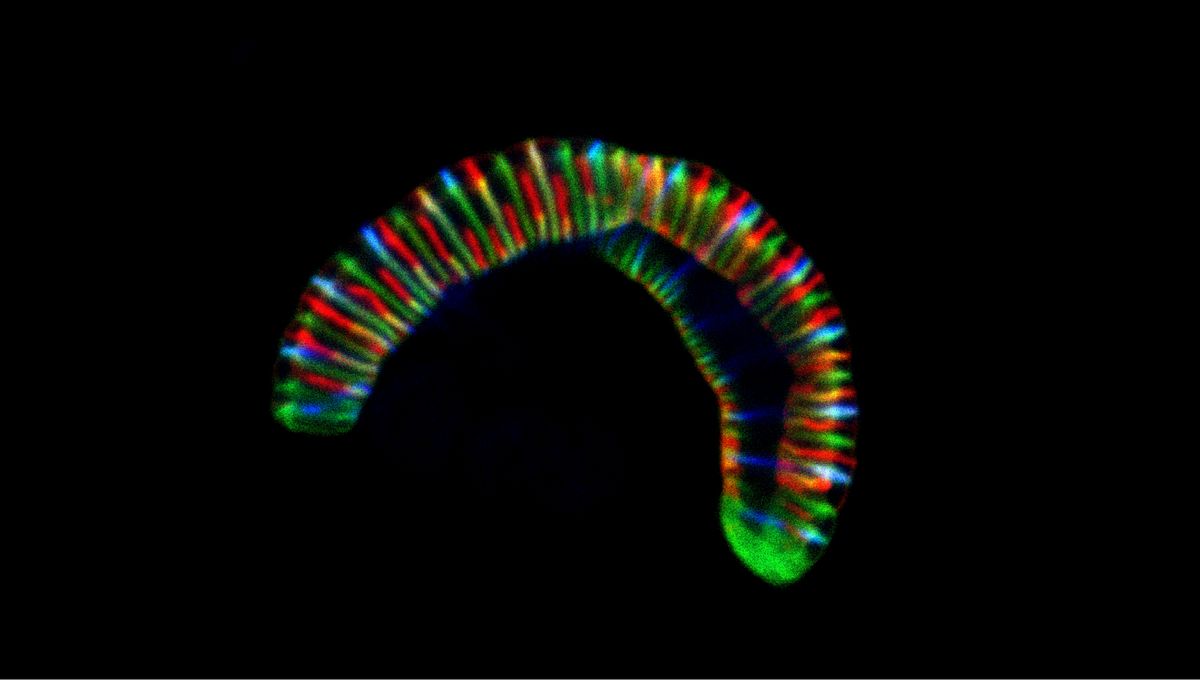
The human mouth is teeming with many different organisms, over 700 species in fact. Some are beneficial, while others may be associated with conditions such as migraines. The human body is a great host, as we are warm and moist, however, the mouth is a harsh landscape to live in. It can be difficult for organisms to attach to the surface as the oral cavity is always shedding and the saliva is always flowing.
Now, researchers have identified some little critters that may be able to hang on a bit better – snazzy caterpillar-like bacteria from the family Neisseriaceae, specifically of the genera Alysiella, Simonsiella, and Conchiformibius. The results are published in Nature Communications.
Rod-shaped bacteria tend to split transversally (horizontally) before detaching from each other. However, some Neisseriaceae split longitudinally (along the long axis) and then hang on for dear life by their tips. In these longitudinally-split bacteria, once the division is complete, they tend to remain attached and form caterpillar-like filaments. In fact, some of these cells can adopt different shapes, which may help the bacteria to survive nutritional stress.
In the study, the team used an electron microscope to delve into the bacterial cell shape across the family Neisseriaceae. They investigated the standard bacteria shapes (rod and coccus), along with the caterpillar-like filaments. The evolutionary history of these shapes was also examined through genome investigations, and the genes responsible for the unusual division were identified.
The team also used fluorescence labeling technology to look into the cell growth progression in multicellular bacteria and compared this with the genetic make-up of the more classically shaped rod species. The researchers also tried to introduce the genetic changes into the rod-shaped Neisseriaceae, to recreate the evolutionary history. This was unsuccessful and the rod-shaped bacteria could not become multicellular, although the team was able create longer and thinner cells.
“We speculate that in the course of evolution, through a reworking of the elongation and division processes, the cell shape changed, perhaps to better thrive in the oral cavity,” study author Frédéric Veyrier said in a statement.
“Apart from helping us to understand how cell shape evolved, multicellular Neisseriaceae may be useful to study how bacteria learned to live attached to the surface of animals, the only place they have been found to occur so far. Half of us is carrying them in our mouths, by the way”, explained Silvia Bulgheresi of the University of Vienna.
Philipp Weber, who also worked on the study, emphasized that “expanding the cell biology field to additional morphologies and symbiotic species is also crucial to increase the pool of protein targets (e.g., antibiotic targets) for biopharmaceutical applications.”
“An evolutionary approach, such as that undertaken here for the Neisseriaceae, can shed light on new, unforeseen protein targets,” Sammy Nyongesa, first author of the study, added.
Overall, the members of the Neisseriaceae family may be good model organisms for division studies and could help pinpoint new antimicrobial targets.
Source Link: Caterpillar-Like Bacteria Can Cling To Your Mouth Thanks To Clever Evolution Trick